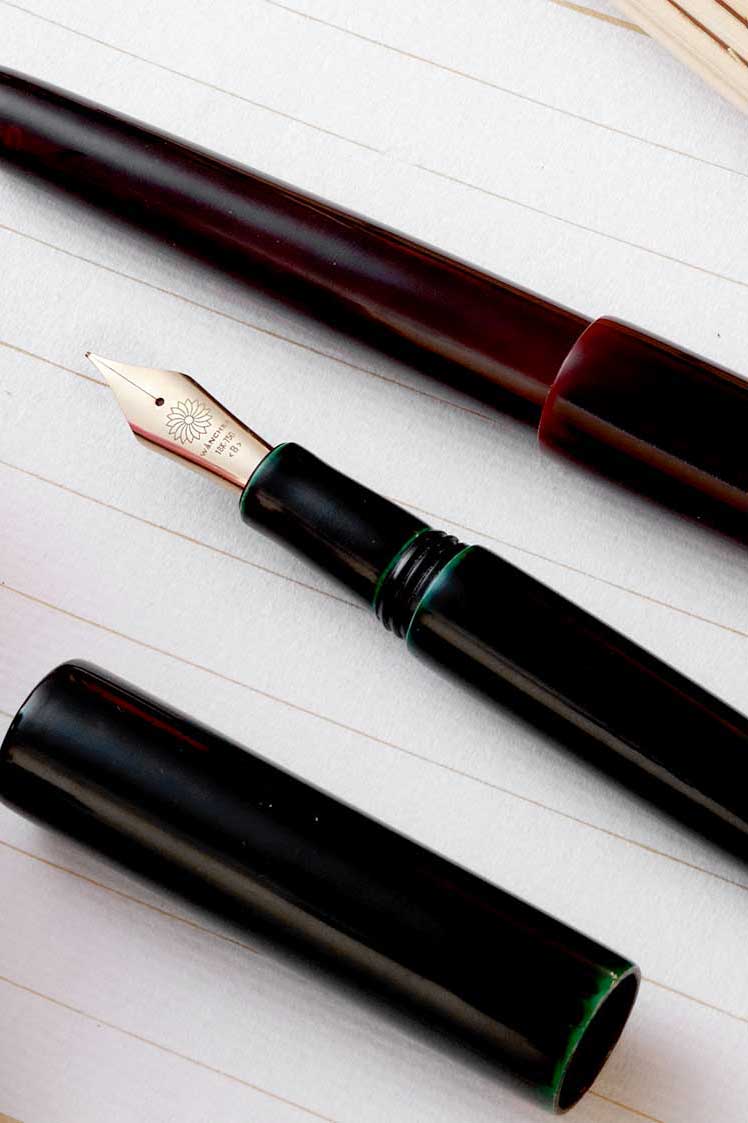Sekai Fountain Pen
Fuzhou Urushi
Fuzhou Dry Lacquer
An unusual Urushi art handmade in Fuzhou, China
Fuzhou Urushi collection marks another milestone in our journey of discovering hidden arts around the world.
This time, we are bringing to you the very first Urushi fountain pens handmade with the Dry Lacquer technique from Fuzhou, a city in southeastern China.

Known as one of the three most famous handicrafts in the country, along with porcelain from Jingdezhen, Jiangxi, and cloisonne from Beijing,
dry lacquer from Fuzhou is a treasure of Chinese
traditional arts.
Known as one of the three most famous handicrafts in the country, along with porcelain from Jingdezhen, Jiangxi, and cloisonne from Beijing, dry lacquer from Fuzhou is a treasure of Chinese traditional arts. The technique is said to be invented by artist Shin Shoan (沈紹安) during the Qianlong era (1736-1795). This is then passed down to several generations and became the pinnacle of Chinese Urushi lacquer these days.
The technique is said to be invented by artist Shin Shoan (沈紹安) during the Qianlong era (1736-1795). This is then passed down to several generations and became the pinnacle of Chinese Urushi lacquer these days.
Known as one of the three most famous handicrafts in the country, along with porcelain from Jingdezhen, Jiangxi, and cloisonne from Beijing, dry lacquer from Fuzhou is a treasure of Chinese traditional arts.
The technique is said to be invented by artist Shin Shoan (沈紹安) during the Qianlong era (1736-1795). This is then passed down to several generations and became the pinnacle of Chinese Urushi lacquer these days.
Sekai Fuzhou Urushi fountain pen is handcrafted with dry lacquer technique by skillful artisans from Fuzhou and it owns all the characteristics that dry lacquer is well-known for: durable, light in weight, and rich in color.
Different from the glossy finish usually seen with other Urushi techniques, dry lacquer creates a unique finish that has a rich and strong texture resembling a semi-matt surface.

After the sap is collected from the tree, it is refined and well-prepared for the lacquering process.

A layer of hemp cloth is soaked into a fine base coating lacquer and then applied over the surface of the pen.

Once the first coat layer is dry, many layers of middle and top lacquers are applied also using lacquered hemp cloth.
This is the result of a very distinctive making process of dry lacquer.
First, the sap is collected, refined, and well-prepared for the lacquering process.
Then, the artisan use a hemp cloth to soak in the lacquer, and apply on the pen's surface.
Only when the previous layer is dry will the next layer be applied with the same technique.


Coat after coat of lacquer is crafted and polished until the surface is perfectly smooth and rich. Yet, each coat must dry completely and evenly polished before the next coat.
This is why the whole process is intensively laborious and requires not only a lot of time, but also a great set of skills and attention.

The dry lacquer leaves the pen with a marvelous decoration and also works as a strong protective layer that helps your fountain pen last for a lifetime.
When time passes by, the Urushi finish will become brighter and glossier. You will be enjoying the beautiful aging process of this artwork for many more years to come.
* Traces of the use of lacquered cloth over a many-month making process can be seen on the surface of the pen. It becomes a part of the art and considered an artistic charm of this technique. Please do not mistake this part of the craftsmanship with defects.

Coat after coat of lacquer is crafted and polished until the surface is perfectly smooth and rich. Yet, each coat must dry completely and evenly polished before the next coat.
This is why the whole process is intensively laborious and requires not only a lot of time
but also a great set of skills and attention.

As the first special edition of the Urushi fountain pens ever made with Dry Lacquer from Fuzhou,
only for this time, each piece will come with a serial number handwritten
by the craftsman who made the pen.


